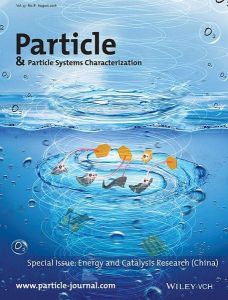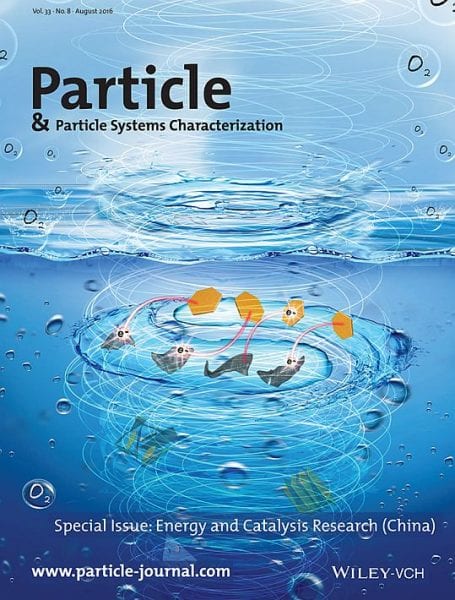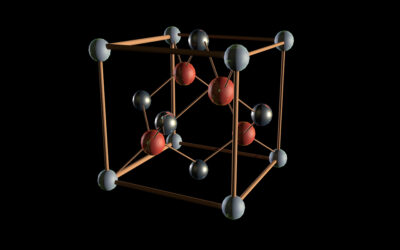By Xinbo Zhang and Xiaoming Sun
Energy is a vital input for the socio-economic development of any nation, while catalysis provides great opportunities for clean and efficient energy conversion/storage. The last decade has witnessed tremendous development in research on energy and catalysis topics, among which there is a great portion of contribution from the Chinese research community. It should be noted that most of the energy and catalysis related applications  are based on materials and a large group of these materials are particles. In consequence, rational design and artful synthesis of micro- and nanoparticles could potentially break the bottleneck and thus create new opportunities. Although much attention has been devoted to the synthesis of particles with precisely controlled sizes and shapes and to the understanding of their unique physical and chemical properties, there is still plenty of room to further improve the performance of these energy-producing and catalytically active particles in complex working media and conditions. In a Special Issue published in Particle & Particle Systems Characterization, the latest research results in energy and catalysis from the Chinese research community are highlighted, which are expected to further stimulate interests and innovations in relevant areas.
are based on materials and a large group of these materials are particles. In consequence, rational design and artful synthesis of micro- and nanoparticles could potentially break the bottleneck and thus create new opportunities. Although much attention has been devoted to the synthesis of particles with precisely controlled sizes and shapes and to the understanding of their unique physical and chemical properties, there is still plenty of room to further improve the performance of these energy-producing and catalytically active particles in complex working media and conditions. In a Special Issue published in Particle & Particle Systems Characterization, the latest research results in energy and catalysis from the Chinese research community are highlighted, which are expected to further stimulate interests and innovations in relevant areas.
The issue starts with two review articles. The review by Haibo Zeng (DOI: 10.1002/ppsc.201500243, page 457) presents a comprehensive overview on the recent progresses of CQDs with an emphasis on their applications in photocatalysis is presented. The review of Qiang Zhang (DOI: 10.1002/ppsc.201600004, page 473) focuses on the recent advances concerning synthetic strategies, hierarchical structures, and OER performances of NiFe LDH/nanocarbon hybrid electrocatalysts. Two communications in the photocatalysis area follow. Yujie Xiong (DOI: 10.1002/ppsc.201500239, page 506) demonstrates that enhanced photocatalytic water splitting performance is achievable by synthesizing Pd and Pt co-catalysts. Furthermore an enhanced photocatalysis performance with site-specific growth of Au/CdSxSe1−x anisotropic hetero-nanocrystals is realized by Jiatao Zhang (DOI: 10.1002/ppsc.201500247, page 512). The remaining contributions on catalysis are full papers dealing with electrocatalysts for the oxygen reduction reaction, bifunctional electrocatalysts, and electrocatalytic hydrogen evolution. By doping double-shelled GaN hollow spheres with a small amount of oxygen, Yong Zhou has realized an efficient photoreduction of CO2 (DOI: 10.1002/ppsc.201500235, page 583). With the help of a simple electrochemical treatment process in acidic medium, Wei Chen has demonstrated a class of highly active and durable PdAg bimetallic alloy nano-electrocatalysts by tuning the surface composition (10.1002/ppsc.201500234, page 560). Xiaoming Sun used graphene as support for loading Co1−xS to obtain bifunctional catalytic (ORR/OER) activity (DOI: 10.1002/ppsc.201500242, page 569). Successfully, Yanguang Li and his team have prepared 25 different MoxW1−x(SySe1−y)2 alloys with high yields and desirable hydrogen evolution efficiency (10.1002/ppsc.201500255, page 576).
Subsequently, research in the energy storage sector is discussed. Five full papers on lithium-ion batteries (LIBs) and sodium-ion batteries (SIBs) are listed. According to Yan Yu (10.1002/ppsc.201500137, page 524), the carbon matrix dimensions can influence the electrochemical performance of germanium oxide in LIBs. Gaoren Li has successfully constructed high performance LIBs with Cu2Sb alloy–nanoparticle clusters (CANCs) supported on porous Cu networks as the anode material (10.1002/ppsc.201500198, page 553). With the help of three-dimensional V3O7*H2O/partially exfoliated carbon nanotube composites, Xihong Lu, Y. Tong, and co-workers have improved the lithium storage significantly (DOI: 10.1002/ppsc.201500130, page 531). The team led by Yongsheng Hu has specifically improved the cycling performance and high capacity of SIBs with sodium-deficient Na0.9[Ni0.4MnxTi0.6−x]O2 layered-oxide with O3-type structure as the cathode material (DOI: 10.1002/ppsc.201500129, page 538). Effectively, Yuliang Cao and co-workers have synthesized graphene-modified TiO2 microspheres with enhanced sodium-ion storage via a facile spray-drying route (DOI: 10.1002/ppsc.201500216, page 545). Subsequently, the communications by Jinping Liu (10.1002/ppsc.201500236, page 487), Junmin Yan (10.1002/ppsc.201500227, page 493) and Xinbo Zhang (10.1002/ppsc.201500193, page 500) deal with the research on lithium-ion batteries, sodium-ion batteries and flexible Li-O2 batteries, respectively. Liu has successfully prepared high-rate and stable LIB anodes by confining Fe2O3 nanoparticles on graphite foam. According to other research of equal importance, by Junmin Yan, a high-performance SIB is realized with MWNTs@Sb2S3@PPy coaxial nanocables as the electrode material. Xinbo Zhang has successfully assembled a flexible Li–O2 battery with Ru-modified Co3O4 nanosheets grown on carbon textiles as cathode materials. Last but not the least, Shuai Wang (10.1002/ppsc.201500185, page 519) reports a synthesis of mesoporous tin oxide hollow spheres and functionalized nanoreactors.
It is exciting that the field of energy and catalysis particles has expanded significantly in recent years. Despite great advances in the design and engineering of nanomaterials to achieve higher performance and efficiency, the high cost and poor long-term stability remain challenging and require further efforts from scientists and engineers across the fields of chemistry, physics, materials, and even industry. We hope this timely special issue will bring together such efforts to further advance the field of particles for energy and catalysis applications. We are grateful to all the contributors and reviewers for their dedicated work and the editorial team at Wiley-VCH for their strong support.
 Dr. Xinbo Zhang is a Full Professor at Changchun Institute of Applied Chemistry (CIAC), Chinese Academy of Sciences (CAS). He obtained his Ph.D. in inorganic chemistry from CIAC and was granted the CAS Presidential Scholarship Award in 2005. He worked as a Japan Society for the Promotion of Science (JSPS) postdoctoral fellow (2005–2007) and a New Energy and Industrial Technology Development Organization (NEDO) research associate (2007–2009) at National Institute of Advanced Industrial Science and Technology (AIST), Japan. His main interests are functional inorganic materials for batteries, fuel cells, electrochemical water splitting and carbon dioxide reduction.
Dr. Xinbo Zhang is a Full Professor at Changchun Institute of Applied Chemistry (CIAC), Chinese Academy of Sciences (CAS). He obtained his Ph.D. in inorganic chemistry from CIAC and was granted the CAS Presidential Scholarship Award in 2005. He worked as a Japan Society for the Promotion of Science (JSPS) postdoctoral fellow (2005–2007) and a New Energy and Industrial Technology Development Organization (NEDO) research associate (2007–2009) at National Institute of Advanced Industrial Science and Technology (AIST), Japan. His main interests are functional inorganic materials for batteries, fuel cells, electrochemical water splitting and carbon dioxide reduction.
Selected awards include “Hundred Talents Program” of CAS (2011), the Excellent Young Scholars of NSFC (2014), and Young Top-Notch Talent (2015).
 Professor Xiaoming Sun gained his B.S. degree and Ph.D. in Department of Chemistry, Tsinghua University in 2000 and 2005, respectively. After postdoctoral work at Stanford University, he joined State Key Laboratory of Chemical Resource Engineering, Beijing University of Chemical Technology at 2008. His main research interests focus on gas-superwetting electrodes for gas-involved electrocatalysis, nanoseparation of colloidal nanoparticles, and assembly of inorganic nanostructures, especially carbon nanomaterials and their composites. His recent interests focus on applications of micro-/nanostructures in energy sciences. He devotes himself to nanomaterials and nanotechnology.
Professor Xiaoming Sun gained his B.S. degree and Ph.D. in Department of Chemistry, Tsinghua University in 2000 and 2005, respectively. After postdoctoral work at Stanford University, he joined State Key Laboratory of Chemical Resource Engineering, Beijing University of Chemical Technology at 2008. His main research interests focus on gas-superwetting electrodes for gas-involved electrocatalysis, nanoseparation of colloidal nanoparticles, and assembly of inorganic nanostructures, especially carbon nanomaterials and their composites. His recent interests focus on applications of micro-/nanostructures in energy sciences. He devotes himself to nanomaterials and nanotechnology.

















